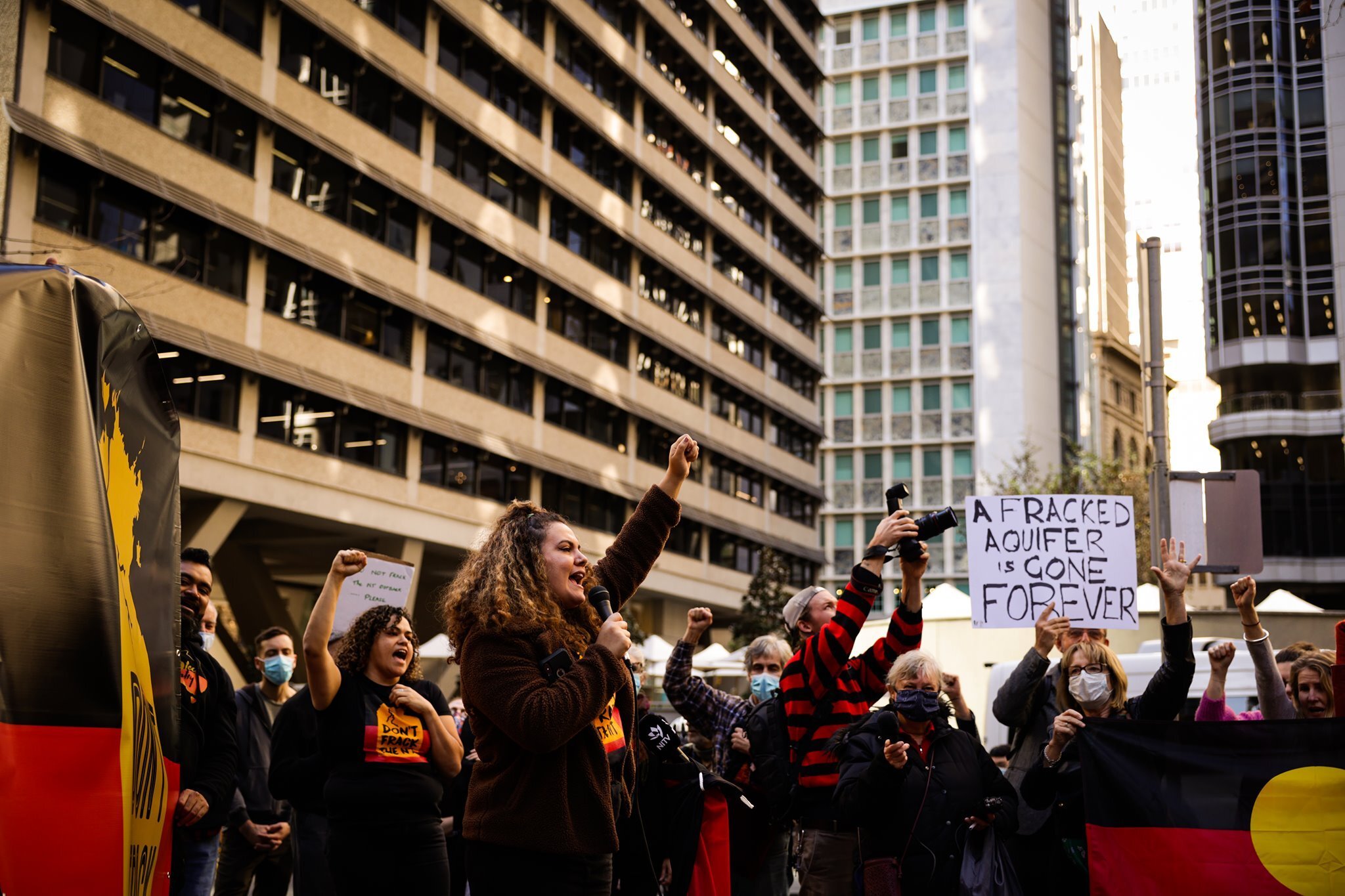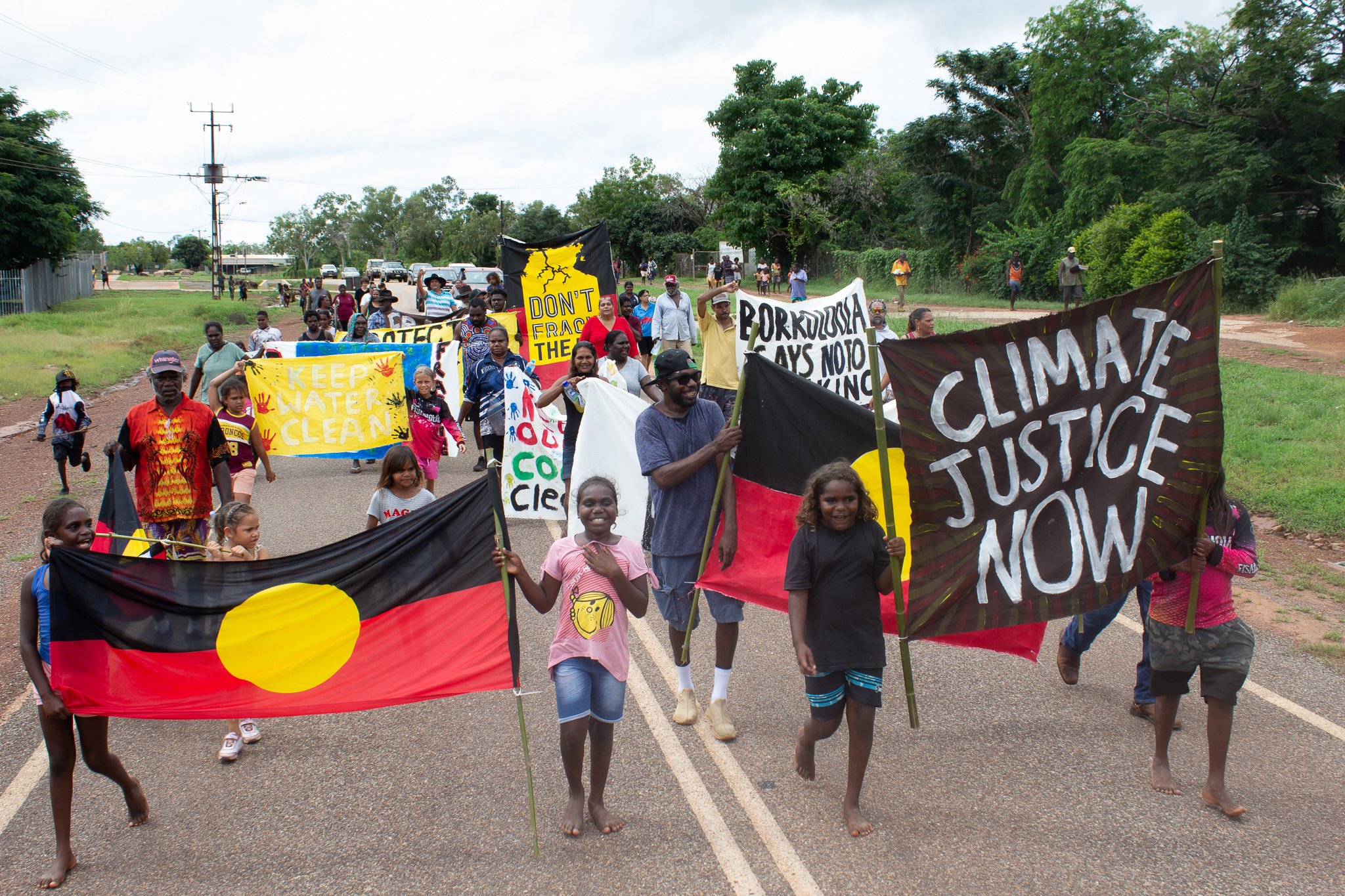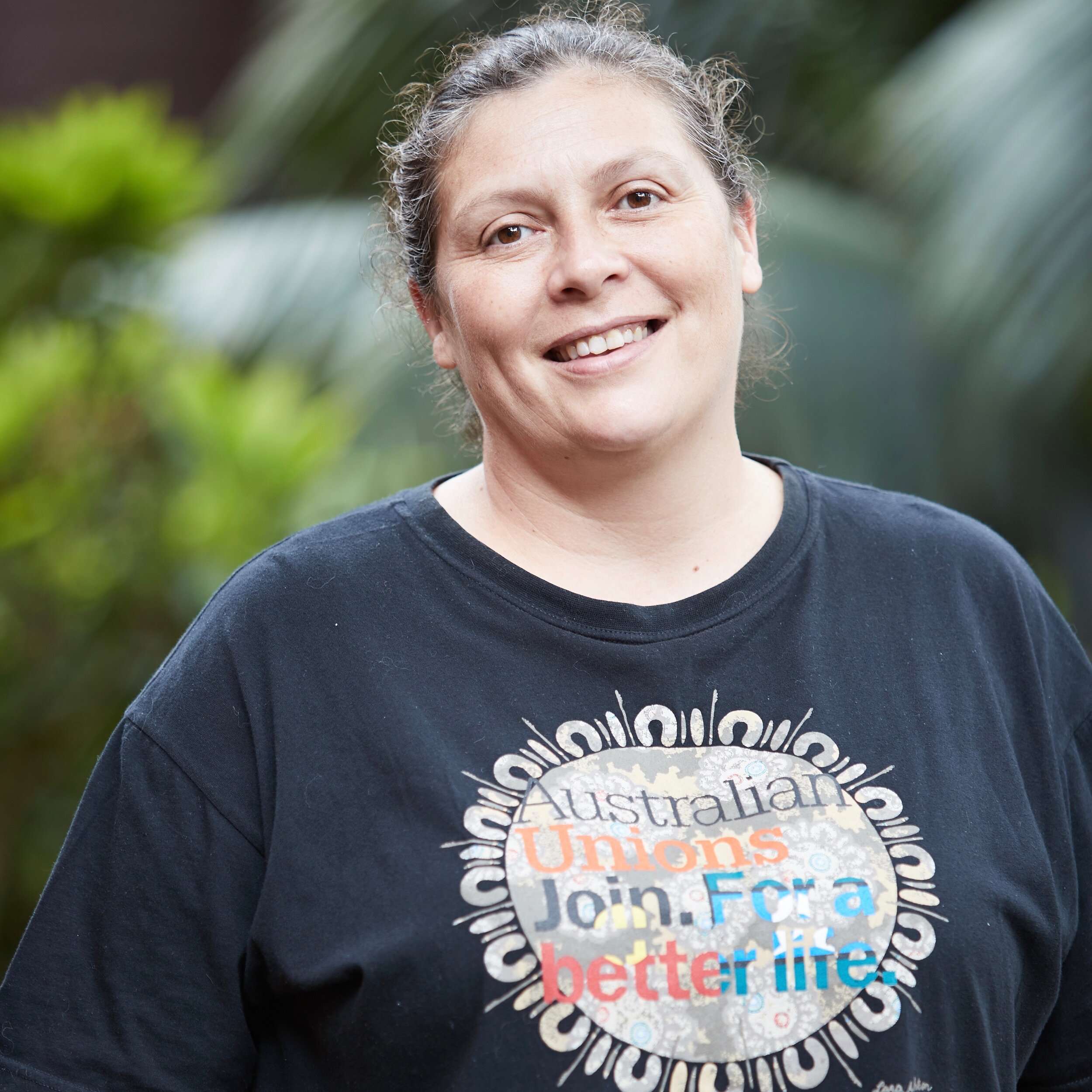
winning transformative change,
starting with Yes
Here are five messaging recommendations to
win A resounding Yes in the referendum,
and build support for transformative change beyond it.
-

1. Shared values
-

2. A clear vision
-

3. Theory of change
-

4. Our strength and leadership
-

5. Vote first, model second

1. Shared values
Our messages are most effective when we start with a shared value.
The strongest performing values from our research - including listening, respect and equity - not only make people more likely to support us, but more likely to maintain support in the face of the racist ‘No’ messages.
Values are something we can all relate to, for example: “We’re all better off when we’re treated with respect, regardless of our skin colour, income or where we live”.
Values bring people together over common ground, and make them more confident sharing our messages. Regardless of someone’s expertise, they’ll be able to talk from what ‘feels right’. This is how we can shift millions of people into advocates.
-
Our base and persuadables overwhelmingly agree that listening to First Nations people “when making laws and policies that impact them” will lead to better laws and policies.
Listening is closely linked to other values that performed well in our research, such respect and inclusion, and the ‘community knows best’ frame.
Here’s how to use listening in your messaging to build support among persuadables:
“We should all have our say - especially in decisions that impact us.”
“Just as laws impacting country people, older people or people with disability will be better if we hear what they think – it is common sense to hear what First Nations people have to say when making laws and policies that impact them.”
“We can have a fairer and better future when First Nations people have a seat at the table and a greater say in their future.”
-
The value of respect is very powerful and strongly resonates with persuadables, who agree that “recognising and respecting First Nations peoples’ knowledge, cultures, stories and languages will help us move together towards a better future.”
This idea of respect extends beyond individuals to our culture, history and knowledge.
Here’s how to use the shared value of respect in your messaging:
“Writing Yes in the referendum is a way for me to say I respect and value First Nations people and culture.”
“Over the next decade, we can work together to leave future generations more united, where First Nations people are respected, listened to and treated with dignity.”
“Just as New Zealand has embraced Māori culture, we can create a future where we respect and value First Nations people and take pride in the oldest living culture in the world.”
-
One of the most promising findings is how strongly Australians believe in the value of equity – that people should have what they need to thrive.
Persuadables believe being locked out of decision-making is an inequity that should be fixed, making this a strong value and frame to embrace.
Here’s an example of how to use the concept of equity in a message:
“Everyone should be treated fairly and equally respected. We should all have our say - especially in decisions that impact us.
But Aboriginal people are not treated fairly with decisions often being made top-down without considering their ideas and perspective.Voting Yes in the referendum can help to make our system fairer so that everyone has a chance to be heard.
This is an important step towards a society that respects First Nations people and culture and leads to meaningful improvements in the quality of life for Aboriginal people.”
2. Vision
When we connect this moment to our bigger vision and solutions, more people support us.
More than half the population (56%) see this moment as bigger than the referendum, and an opportunity to bring about more meaningful change.
And perhaps most promising, our research found there is similar support for treaties, representation, land rights and policies for equity and justice, and persuadables want to see a better future for everyone.
Support for transformative policies jumps 10% when we connect our asks to solutions and a bigger picture vision for what our world could look like.
Here are some examples that include a bigger picture vision in messaging about the referendum:
“If a clear majority write Yes in the referendum, we will send a strong message that we want justice, equality and a better and fairer future for First Nations people.”
“We have the opportunity to build support for solutions First Nations communities have been calling for for decades like treaties, truth-telling, land rights and representation.”
“We can have a fairer and better future when Aboriginal people have a seat at the table, to deliver meaningful outcomes in health, housing, land management and more.”
“This is an important step towards a fairer society and meaningful improvements in the quality of life for First Nations people.”
‘Yes, and…’
Another effective way of building ambition into messages is to use the ‘Yes, and…’ framework. ‘Yes, and…’ is a simple way of connecting the moment we’re in (the referendum) with our bigger vision for what comes next.
Here’s an example:
“I’m supporting Yes in the referendum, and transformative change beyond it, including treaties, truth-telling, land back and stopping deaths in custody”.
3. Credible theory of change
One of the most important ingredients for a persuasive message is a theory of change: a story of how we can get from where we are to where we want to be.
Theory of change formula:
If we do this
↓
Then this better outcome will happen
↓
Because (explain reasoning).
Our theory of change:
If we build a groundswell of public support and win a resounding Yes, then a wave of transformative change for First Nations justice will follow, because public momentum and demand gives governments a political mandate to act on bold policy reform.
To be shared widely, a theory of change must have two key ingredients:
It must be credible, so when you share it, people believe it and want to support it.
It must be compelling to motivate people to act, share it, volunteer and make it happen.
Persuadables also resonate with theories of change that talk about the referendum being ‘a step in the right direction’.
-
A theory of change must be credible and believable for it to resonate with our base and persuadables. To make referendum messages credible, the research shows we can talk about the tangible outcomes that will result from an elected representative body, or lift our story to a bigger vision for change.
An example of a credible theory of change talking about specific outcomes is:
“If First Nations communities are represented in shaping national policies, then there’ll be better outcomes in housing, health and more, because we know what’s best for our communities.”
This works well for persuadables because it’s common sense that policies are better when shaped by the the people most impacted by then (be they First Nations people, people with disability, regional people).
-
Our research shows messages that combine credibility with a compelling and visionary theory of change really inspired our communities and allies.
The most compelling theory of change that we found in our research was:
“If the overwhelming majority of people write Yes, then we can create a wave of transformative policy changes - like treaties, land rights and equity - because of the momentum and the political mandate of voting together.”
And here’s an example of a different structure theory of change, that still includes the key elements:
“Most people are with us and ready to show their support, because of the hard work of our Elders and communities. When we turn this momentum for change into a resounding Yes vote, much more will be possible.”
Persuadables also resonated with the history of the marriage equality survey as evidence that things do change when the majority write Yes:
“If an overwhelming majority of people write Yes in the upcoming referendum, governments will be forced to enact the policies that First Nations people have been calling for. Just like with marriage equality, governments will be compelled to represent their electorates.”
These are all more compelling to our base because they demonstrate the referendum is a step in the right direction to enabling the momentum required to create a wave of transformative changes. Part of what makes these so credible is that it moves the hero of the story from the government to the general public. Because there is a general mistrust of governments around First Nations policy making, especially in our communities, people are more hopeful and believe it more when the change comes from the people.
-
One of our challenges is that people don’t trust the government to listen, and so wonder whether a Voice to Parliament will actually be meaningful.
We therefore need to be careful not to oversell or undersell the tangible outcomes from a Voice to Parliament. Our research shows that when you tell people “vote for a Voice for Parliament to create a better future for First Nations people”, they don’t believe it. You need to talk more about the tangible outcomes in housing, health, education or issues impacting people's lives.
On the other hand, if you undersell it and call it an advisory body, then people think it’s a ‘toothless tiger’ and worry that it is meaningless. That is why we recommend calling it a representative body, and speaking to the outcomes that come from greater representation.
One way to help people understand how this relatively small change of a Voice to Parliament can help us get to a better future, is to say “writing Yes won’t change everything, but it’s a step in the right direction”.
4. Centre First Nations strength + leadership
People are more supportive when they hear messages of our strength, leadership and solutions.
Our research found that most people feel genuinely positive towards our people and culture, they recognise we have been unfairly treated and want to see improvements to our lives.
However, a small minority, our opponents, remain hostile and cast us as the problem, with racist stories of dysfunction and deficit. Many people have never met a First Nations person, so stigma and stereotypes in the media shape their perspectives.
Our research shows persuadables are more supportive when they hear messages of strength and capability.
Because the referendum is ultimately a vote about how people perceive us – we need to flood the airwaves and conversations with stories of our strength, leadership and solutions.
Here are some examples of messages with First Nations strength and leadership that tested well:
“Aboriginal communities are strong and capable, rich in culture and knowledge.”
“Recognising and respecting First Nations peoples’ knowledge, cultures, stories and languages will help us move together towards a better future.”
“Over many decades First Nations communities and experts have come up with many solutions to improve the lives of First Nations people. What we need is governments to act on these solutions.”
“Our people are strong and resilient and when we are free to choose our own path, the whole country benefits.”
A note on respectful debate
Overwhelmingly people accept that First Nations communities are diverse and have different perspectives. Our research shows persuadables are also understanding of the idea that some First Nations people don’t want a Voice to Parliament because they are advocating for more ambitious policy changes.
When we attack or undermine First Nations people with a different perspective, we do two things, we feed into the idea of our dysfunction, and we polarise our community into defensive positions.
We need space for respectful conversations and debate, so that everyone can be informed in making the right decision for them and their community. To do this, we must avoid attacking First Nations people.
5. A clear sequence
First we vote for a representative body, then there’s a consultation process to decide the model.
Both First Nations people and those who are persuadable need to understand the process of the referendum and what follows.
Our communities and persuadables want to see a model that is reflective of the diversity of our Nations, regionally representative and elected by our communities. In fact, 73% of persuadables believe that the Voice must be genuinely representative of the diversity of Aboriginal communities across the country.
Instead of getting into details, we can use the frame of a clear sequence to show how we get to a representative model. Here’s how:
First, we vote – everyone will vote on the principle of whether we should have a representative body
Second, there’s a thorough consultation – the government intends to lead a consultation process with First Nations communities to develop a representative body. We must demand this and hold them accountable.
Embrace
“First, we all vote on the principle of the matter, then with a mandate for Yes, we move to a thorough consultation process with First Nations communities to make sure the model is regionally representative. If doesn’t make sense to conduct a consultation process without the mandate from the Australian community first.”
replace
“Don’t worry about the detail, the Voice is harmless.”
“The detail will be revealed in due course” (this suggests we’re withholding details).

If you haven’t already, check out the
Foundational principles
Scroll for a preview of the seven foundational messaging principles proven to build widespread support for First Nations self-determination and justice. They should underpin our messaging on all topics, including the referendum and beyond.

Australia is ready for a fair go when it comes to First Nations people. If we don't do it now, it's a lost opportunity.
Lara Watson
Birri Gubba
Indigenous Officer, Australian Council of Trade Unions (ACTU)
Want to learn more?
-
Messaging resources
See the full set of resources, including the research report, summary guide, conversation toolkit, social media pack and more.
-
Advice for crafting winning messages
For more information on frames proven to shift persuadables, our central proposition and how to do truth-telling in a way that builds support for our asks.
-
Conversation toolkit
Learn principles of persuasion, frameworks to lead your own persuasive conversations as well as example Q&As and issue-based conversation structures to inform your own conversations.








